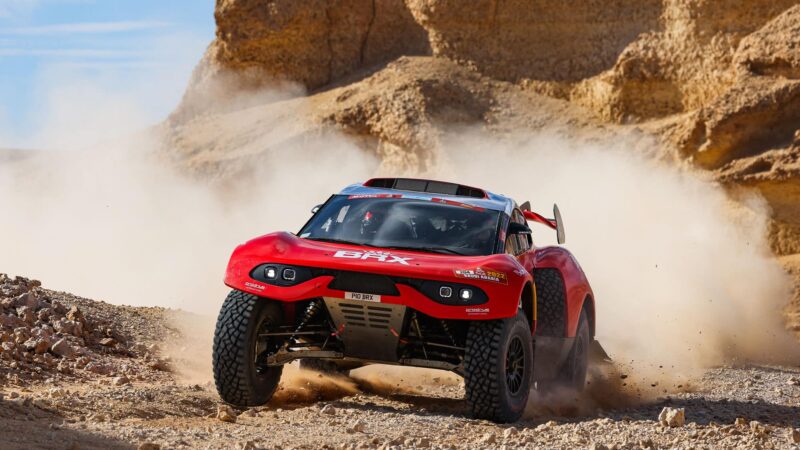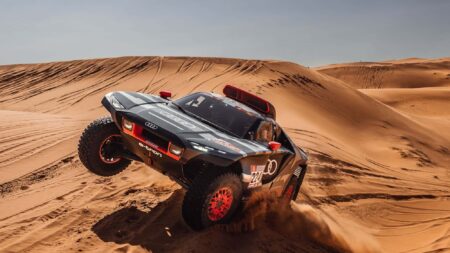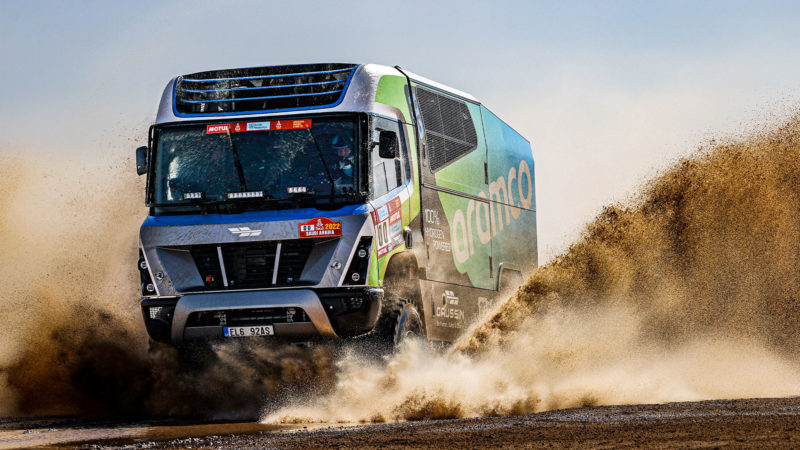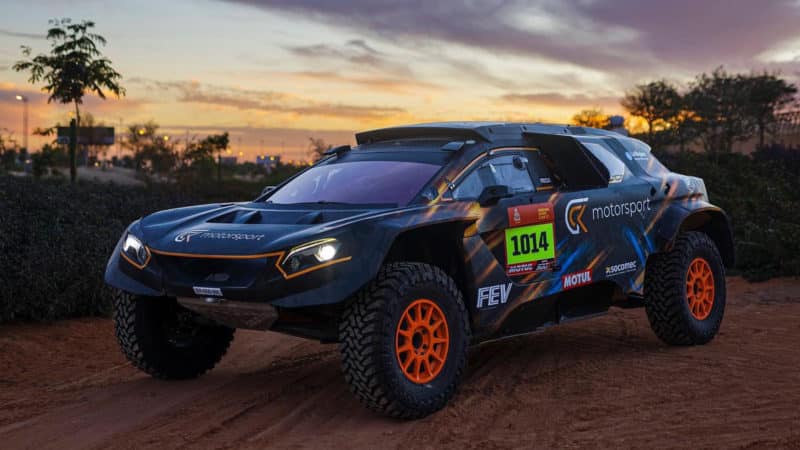It’s intriguing to note that at no point does Audi mention anything in the marketing for this year’s Dakar push as being about green energy, sustainability or helping the environment, instead vaguely stating to the “Future is an attitude” in its marketing slogans. What it of course wants to do in the future is sell road cars, and the marque can see which way the desert wind is blowing as to how many of them will be EVs. That is after all its main aim of being in Dakar – getting the public to buy more cars, not necessarily save the world. It allows the consumer to make the connection.
The punchiest opposition to Audi is the Prodrive team. Famous for, amongst other wildly successful motor sport projects, taking Colin McRae to the 1995 WRC title in a Subaru Impreza, its BRX Hunter, piloted by Sébastien Loeb, is a conventional ICU monster powered by a 3.5-litre Ford GT V6.
This is where it diverges from the usual though. Instead of being powered by conventional juice, it instead uses EcoPower, a concoction formulated by bespoke fuel supplier Coryton.
David Lapworth, Prodrive’s Technical director, broke it down for Motor Sport at Dakar.
“The main ingredient for our fuel – 90% – is agricultural waste,” he says. “The other 10% is fossil fuel, which is part of the blend required by the FIA. But the target is that 10% will come down and down and will be 0% in a year or two.”
The saving the car will make is considerable, particularly when compared to the Audi.
“A normal petrol car would produce 36 tonnes of CO2 across Dakar,” Lapworth explains. “We’re producing about six [per car]. The Audi is a little more efficient than us, probably produces about 30 tonnes. Our emissions are about 80% down on what we would produce with normal petrol.”

Prodrive believes its biofuel is currently in line with Dakar’s ultra-low emission aim
Dakar/DPPI
Key to Prodrive’s eco push is the fact the CO2 which comes out of the Hunter’s tailpipe is already in the atmosphere previously, hence the reduction in emissions.
The fuel is not overly expensive, coming in at roughly £4 a litre. Lapworth can also see how it would be immediately beneficial to the ‘real world’.
“Take your average electric car,” he says. “They reckon it’s about 70,000 miles before you offset the amount of CO2 that’s embedded in its manufacturer because it’s so energy intensive to create lithium-ion batteries – it takes a lot of mining.
“And even then it’s not as green as you think because we’re still getting electricity from coal-fired power stations.






